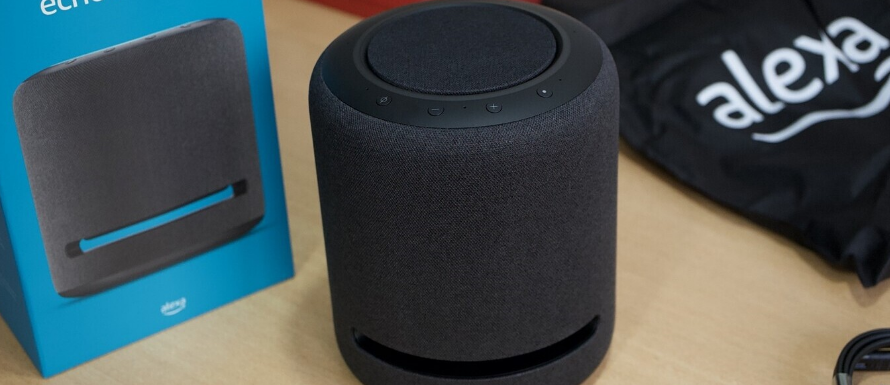
If you have been given a device based on the Alexa assistant, such as an Amazon Echo speaker, headphones, or a television, among others, we bring you a small startup guide so that you can understand what it is and what you can do with it. We are going to try to explain things to you in a summarized way so that you do not spend too much time on these guides, and you can focus on enjoying your device.
We are going to start the article by trying to explain to you briefly and simply what exactly this Amazon program is. Then, we will finish by briefly explaining some of the main functions of this assistant, so that you can start asking questions. While it’s always best to spend your time looking for new commands and features, you might be surprised.
What is Amazon Alexa
Alexa is a virtual assistant created by Amazon. This assistant works mainly by voice, so you can ask questions, and the assistant returns the answers to what you have asked. If you want to know the weather information of the city, you can ask him what the weather is like in it and he will answer it.
The assistant also has another function, and that is to allow you to control accessories and other devices using voice commands. For this, Amazon has been forging together with other manufacturers a wide repertoire of Alexa-compatible devices, ranging from smart speakers to televisions, including light bulbs and other types of accessories.
Therefore, it is a very versatile assistant that you will find in various types of devices, allowing you to control each other. In addition, it will be used on all devices with the same voice commands, although some may have a screen and offer the extra of showing images in addition to spoken responses.
How Alexa works
The Amazon assistant, like other voice assistants, works based on voice commands. You have to say a specific command to ask a question, although some requests for information may have more than one command since we want the commands to be natural, and we don’t always ask a thing in only one way.
But the important thing is that we have to use specific formulas, and depending on how refined we want the result, we will have to be more specific. For example, we can ask what the weather is going to be like so that it tells you the weather of the location that it detects as yours, but we can also ask what the weather is going to be like on a certain day and in a specific city.
To these commands, you always have to add another activation command. On some devices like smart speakers, the speaker will always be listening, but the assistant will only be activated if you start the question with the Alexa command. However, it also offers you the opportunity to change its name in case you prefer to use another.
This assistant centralizes your information through a personal account, so you have to link your Amazon account. Also, depending on the device you use it on, it may need other permissions such as access to your location or your microphone to listen to you. But the point is that thanks to using the same account on all devices, Alexa will know that it is you and will offer you the same information on all of them.
Unlike Google Assistant, Alexa does not centralize your searches through a specific search engine and does not use it as a resource. This means that if it doesn’t find the information you asked for, it will tell you that it doesn’t know, although it will always try to give you some information about anything you ask for, including the results of your 2nd B team’s last game.
Alexa’s setup is pretty straightforward. Although everything is centralized in your Amazon account, you will first need to download the Alexa application on your mobile, which is available on Google Play for Android, and on the App Store for iOS. In this application, you can configure the connected devices that you buy and that are compatible with Alexa.
What you can do with Alexa
Alexa is going to allow you to do many things, and one of the first things you’re going to play with is her queries. You can ask it almost anything, and the wizard will find an answer for you. In Xataka Basics we have compiled 137 commands for Alexa, with which you will be able to get an idea of all the queries you can do.
You can ask about the weather, sports results, the time in your city or any other in the world. You can also ask who this or another person is, the meaning of words, or specific data of whatever you want. Like the years that Jordi Hurtado has. By proxy, you can even ask him how far away is the moon or any city, the height of mountains, the inhabitants of countries or cities, or make currency or unit conversions.
The assistant will allow you to manage alarms and reminders. You just have to tell him to set an alarm specifying the time, the day, or even his name, or you can also tell him to set a reminder to schedule alerts. Then, you can ask what alarms and reminders you have and manage them, deleting the ones you want or postponing them.
You can also set timers, for example by telling it to set a 10-minute timer for pizza or add events to your calendar. And speaking of the calendar, you will also be able to synchronize your different calendars, such as Microsoft’s or Google’s, so that all the information is there.
The good thing about this is that the notifications are centralized in your account, which means that they will sound on the devices connected to Alexa that are closest to you. Come on, if you have an Amazon Echo speaker in the room and another in the office, you can set the alarm clock in the office and have it ring in the room.
Alexa is capable of managing lists, so you can tell her to add things to your to-do list, shopping list, or any other list you want to create. Then, all you have to do is ask it what you have on the specific list that you want to consult, and it will tell you all the products, being able to delete the one you already have or add others.
And if you are an active Amazon user, Alexa will also help you with your Amazon purchases. For starters, you can tell it to buy a certain product and it will do so automatically. In addition, when that product or others that you have purchased from the web or your mobile are arriving, Alexa will send you notifications indicating that this or that purchase will arrive today.
The assistant can also help you make calls. It has an internal phonebook with other contacts in your phonebook who have an Amazon Echo device, and you can ask it to call that contact to make the call through the speakerphone. If you have multiple devices connected in the Alexa app, you can send content from one device to another through the assistant, or speak from one device to another.
If you have a device connected to Alexa with a screen such as an Echo Show, all the responses that Alexa gives you will be accompanied by images or videos, and you can ask it to play videos from YouTube or other sites. You can also use it as a digital frame, viewing all or a selection of the photos you have in your Amazon Photos account.
And if you can watch or listen to YouTube videos, you can also stream music on Alexa. You can use Amazon Music, or a link to Spotify to listen from there. Then, all you have to do is ask it to play a certain group, album, playlist, or song. You will also have controls to listen to the next song, or the previous one, or pause the playback. It also serves to listen to audiobooks or podcasts.
You will also be able to ask Alexa to tell you a number from 1 to 100, to toss a coin, or to roll a die. You can ask him for jokes, to sing to you, riddles and other types of games. And even more complicated things, since the Alexa team continues to work on functions such as detecting when your washing machine has finished, and being able to hear its warning beeps. The possibilities are as endless as its hundreds of commands.
Alexa will also allow you to set up routines, which are like scheduled actions. You will do this from the app, and you will configure your voice command and all the things you want Alexa to do when you say that command. Thus, you can create slightly more complex and personalized actions.
And if all this is not enough for you, Alexa allows you to install skills, which are like third-party applications with which the assistant gains new voice commands and new functions. You have all kinds of skills, from information services that add new news sources to cooking recipes, or even games like trivia or Akinator. There is even to ask Alexa the price of electricity.

Sharlene Meriel is an avid gamer with a knack for technology. He has been writing about the latest technologies for the past 5 years. His contribution in technology journalism has been noteworthy. He is also a day trader with interest in the Forex market.









![How to Watch UFC 303 Live Stream Free [Updated 2024] UFC 259 Live Stream Free](https://techsmartest.com/wp-content/uploads/2022/03/UFC-259-Live-Stream-Free-100x70.jpg)
